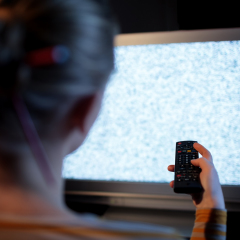Play Offense, Not Defense to Win Hispanic Engagement
Everyone knows that Hispanics are a fast growing, key group of consumers in the marketplace, but do advertisers’ investments reflect that? In a recent Media Post article, Jose Villa writes about the visible trend of marketers increasing investments in the Hispanic Market as a defensive move. Advertisers are experiencing decreases in sales among their General Market target, so they then decide to invest money behind strategies that...
Why the #1 Problem with Advertising is the Easiest to Fix
There are an infinite amount of variables that an advertiser can control to maximize the success of a marketing program. It starts with how to position the brand, which media to use and how to allocate the investment. The puzzle is getting even more complex with the emergence of programmatic buying, second screen opportunities, native advertising, social media vehicles, and all of the other trendy tools out there today.
An ad or a show? Some say YouTube Kids blurs the line
Pop quiz: Which of these are commercials? A video describing what McDonald’s Chicken McNuggets are made of. A video showing LEGO toys being opened and assembled. A video in which characters from the Disney movie “Frozen” drink Sprite. All appear on YouTube Kids, a new free app — described as “kid-friendly content” for “curious little minds” — that mixes ad-like videos with traditional shows. On Monday, a Boston consumer group told...
Save a Little – Lose a Lot: The Potential Pitfalls of Translated Ad Copy
As more brand managers come to the realization that the Hispanic consumer plays an important role in the current and future health of their brands, the struggle to find enough money within the advertising budget to succeed across targets has intensified. Over the past decade or more, most of the larger brands have carved out sufficient ad budgets to engage Hispanics with dedicated creative, and the debate is around whether to create...
Millennials and Brands
Many marketers are concerned about the death of the traditional brand. As the millennial generation (those classified as adults ages 18-34) start to exercise their purchasing power, there is a strong sense of foreboding. The media is full of reports of how millennials don’t pay attention to or believe traditional advertising. Store brands proliferate and consumers who switched from name brands to save money when their household...






